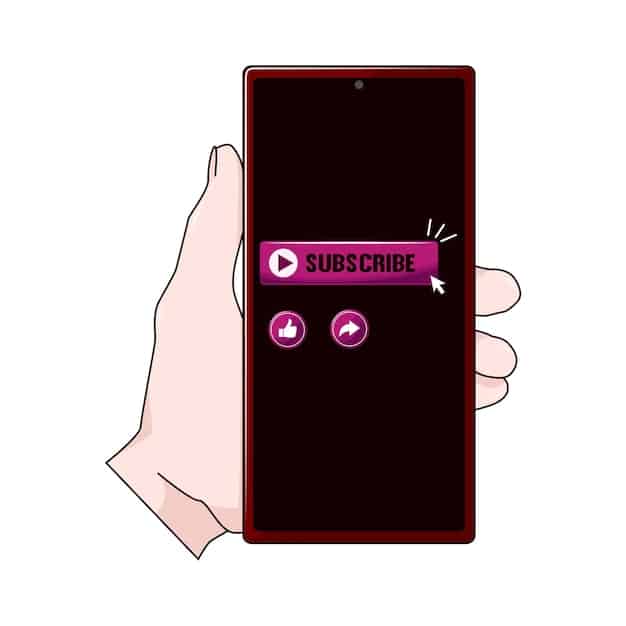Podcast News: Are Podcast Subscription Models the Future for Monetization?

Exploring the evolving landscape of podcast monetization, this article delves into whether podcast subscription models represent the definitive future for content creators seeking sustainable revenue streams and enhanced listener engagement.
the evolving landscape of podcast monetization
The world of podcasting has consistently demonstrated remarkable dynamism, mirroring the rapid pace of digital media consumption. What began as a niche audio format has blossomed into a mainstream phenomenon, attracting millions of listeners and an ever-growing array of content creators. This exponential growth, however, brings with it a perennial question: how do podcasters effectively monetize their creations and ensure long-term sustainability? For years, advertising has been the bedrock, with sponsors weaving their messages into pre-roll, mid-roll, and post-roll segments. While effective, this model often presents challenges related to ad fatigue, audience receptiveness, and the fluctuating nature of ad market rates. As the industry matures, a critical shift is underway, prompting a deeper examination of alternative revenue streams.
from ads to direct support: a paradigm shift
The traditional advertising model, while prevalent, isn’t without its limitations. Listeners, increasingly savvy and discerning, can often skip ads, diminishing their impact. Furthermore, the revenue generated from advertising is often tied to listener volume, making it more challenging for smaller, niche podcasts to secure substantial income. This inherent volatility has spurred a natural progression towards models that foster a more direct financial relationship between creators and their most dedicated fans.
- Listener fatigue: Repetitive or irrelevant ads can lead to a negative listener experience.
- Market fluctuations: Ad rates can vary significantly, impacting revenue predictability.
- Niche podcast challenges: Smaller audiences may struggle to attract high-paying advertisers.
- Dependency on third parties: Creators rely on ad networks for revenue, limiting direct control.
This evolution is not just about financial stability; it’s also about fostering a deeper, more invested community. When listeners directly support a podcast, they become stakeholders, investing beyond their time. This shift signals a move towards valuing content more explicitly, recognizing the expertise and effort creators pour into their work. The market is slowly maturing beyond a purely advertising-driven paradigm, embracing models that offer more robust and predictable income streams for creators. This move away from overt advertising opens new avenues for funding, including subscriptions, direct donations, and premium content offerings. The goal is to create a more resilient ecosystem where podcasts can thrive independent of ad market whims.
understanding podcast subscription models
Podcast subscription models represent a fundamental shift in how audio content is consumed and paid for. Unlike the traditional ad-supported model, where listeners access content for free in exchange for exposure to advertisements, subscription models involve listeners paying a recurring fee for access to content. This direct financial transaction creates a more stable and predictable revenue stream for podcasters, fostering a stronger sense of ownership and community among their most dedicated audience members. The core appeal lies in the ability to offer exclusive value that justifies the monetary exchange.
what do subscriptions offer?
At its simplest, a podcast subscription grants access to content that is otherwise unavailable. This exclusivity is the primary driver of listener adoption. The specific offerings, however, can vary significantly depending on the creator and platform. Many subscriptions provide ad-free listening, a highly sought-after benefit by those who dislike commercial interruptions. Beyond that, premium content often includes extended episodes, bonus interviews, behind-the-scenes insights, and early access to new releases.
- Ad-free experience: A cleaner, uninterrupted listening journey.
- Exclusive content: Bonus episodes, interviews, and deep dives not available elsewhere.
- Early access: Subscribers get new episodes before the general public.
- Bonus material: Transcripts, show notes, producer diaries, and other supplementary content.
The true value of a subscription often extends beyond just the content itself. It can also provide a sense of belonging to a special community. Many podcasters incorporate subscriber-only Discord channels, Q&A sessions, or even live events, turning a financial transaction into a social one. This community aspect is a powerful motivator for many listeners, transforming passive consumption into active participation. The curated experience, devoid of interruptions and rich with exclusive offerings, becomes a compelling proposition for the truly invested listener.
platforms and implementation
The landscape for implementing podcast subscriptions is evolving rapidly, with various platforms offering different tools and features. Services like Apple Podcasts Subscriptions and Spotify’s paid subscriptions provide integrated solutions within their existing apps, streamlining the process for both creators and listeners. Patreon remains a popular choice, offering creators granular control over membership tiers and benefits, while also fostering a direct creator-fan relationship. Each platform comes with its own set of advantages and disadvantages, including fee structures, discoverability, and audience reach. Choosing the right platform is critical, as it impacts ease of use, monetization potential, and the overall listener experience. The decentralization offered by some platforms allows for greater artistic freedom and direct communication with supporters.

benefits for podcasters and listeners
The migration towards podcast subscription models offers a symbiotic relationship, delivering distinct advantages for both the creators behind the microphones and the listeners tuning in. For podcasters, the most immediate and tangible benefit is revenue predictability. Moving beyond the fluctuating nature of ad impressions, a subscription base provides a stable, recurring income stream, allowing for better planning, investment in production quality, and the overall sustainability of their craft. This financial security frees creators to focus on what they do best: producing compelling audio content.
for podcasters: stability and creative freedom
Beyond financial stability, subscriptions empower podcasters with a significant degree of creative freedom. When revenue is tied to direct listener support, creators are less beholden to advertiser demands or brand suitability guidelines. This enables them to explore niche topics, experiment with formats, and maintain an authentic voice without compromising their content for commercial interests.
- Predictable revenue: Consistent income stream for long-term planning.
- Enhanced creative control: Freedom from advertiser influence on content.
- Deeper audience engagement: Cultivating a loyal, invested community.
- Reduced ad-based workload: Less time spent seeking and integrating ads.
This direct connection also fosters a stronger sense of community. Subscribers are often the most engaged listeners, willing to provide feedback, participate in discussions, and act as advocates for the podcast. This symbiotic relationship can lead to invaluable insights and a more motivated creator. The ability to engage directly with a passionate core audience also creates a feedback loop that helps refine content and build even stronger relationships over time. This interaction can transform a casual listener into a true patron of the arts.
for listeners: enhanced experience and exclusive content
For listeners, the appeal of subscription models is equally compelling. The most immediate draw is often an ad-free experience, eliminating interruptions and allowing for a smoother, more immersive listening journey. Beyond that, subscribers gain access to exclusive content – bonus episodes, extended interviews, behind-the-scenes material, or early access – which deepens their connection to the podcast.
The higher quality of content often associated with subscription tiers is another significant draw. With stable funding, podcasters can invest in better equipment, professional editing, and more extensive research, elevating the overall production value. This commitment to quality transforms the listening experience from passive consumption to active engagement. Furthermore, supporting a beloved podcast through a subscription often provides a sense of contribution and belonging, knowing that their direct support helps sustain the content they value. This creates a more curated, premium auditory experience.
challenges and considerations for widespread adoption
While the shift towards podcast subscription models presents numerous advantages, its widespread adoption is not without significant hurdles. For creators, listeners, and the industry at large, several challenges must be carefully considered and navigated to ensure a smooth and equitable transition. These range from the practicalities of implementation to the broader implications for content accessibility and market dynamics.
the competitive landscape and content saturation
One of the primary challenges lies in the increasingly saturated podcast market. With millions of podcasts available, standing out and convincing listeners to pay for content requires a truly compelling value proposition. Differentiation is key, but achieving it in a crowded space, especially for emerging creators, can be arduous. Listeners are already bombarded with free content, making the psychological leap to paid subscriptions a significant one.
- Market overcrowding: Differentiating a paid offering in a sea of free content.
- Perceived value: Convincing listeners that exclusive content is worth the cost.
- Subscription fatigue: Consumers already manage multiple streaming subscriptions.
- Fragmented platforms: Managing subscriptions across various apps and services.
Furthermore, “subscription fatigue” is a growing concern. Consumers often manage multiple streaming subscriptions (video, music, news), and adding another one to their monthly budget requires substantial justification. Podcasters must articulate a clear and unique value that transcends the abundance of free alternatives. The challenge is not just in attracting new subscribers but in retaining them in a competitive environment where other forms of media vie for attention and wallet share.
technical complexities and audience segmentation
Implementing subscription models also introduces technical complexities. Managing subscriber lists, ensuring secure payment processing, delivering exclusive content seamlessly across various devices, and handling customer support can be daunting, especially for independent creators who lack dedicated teams. The technical barrier to entry can be prohibitive for many.
Another consideration is audience segmentation. While subscription models are ideal for monetizing highly engaged listeners, they can alienate casual listeners who are unwilling or unable to pay. This creates a potential divide, where only a fraction of the total audience may access premium content. Podcasters must carefully balance the desire for stable revenue with the goal of broader audience reach and impact. Creators must determine if a partial paywall or a hybrid model (free with premium tiers) is most appropriate for their growth strategy. The balance between accessibility and exclusivity needs to be carefully managed to avoid alienating potential fans.

hybrid monetization models and the future outlook
The discussion around podcast subscription models often positions them as an “either/or” alongside advertising. However, the reality is far more nuanced, with many creators increasingly adopting hybrid approaches that leverage the strengths of multiple monetization strategies. This diversified approach aims to maximize revenue while catering to different listener preferences and engagement levels. The future of podcast monetization is likely multifaceted, blending direct listener support with traditional and innovative advertising methods.
blending subscriptions with advertising and donations
A common hybrid model involves offering a free, ad-supported tier alongside a premium, subscription-only tier that provides an ad-free experience and exclusive bonus content. This allows podcasters to continue reaching a broad audience through advertising while also catering to their most dedicated fans who are willing to pay for an enhanced experience. Direct listener donations through platforms like Buy Me a Coffee or Ko-fi can also supplement revenue, appealing to those who wish to support a creator without committing to a recurring subscription.
- Tiered access: Free ad-supported content alongside premium subscriber-only content.
- Direct donations: One-time or recurring contributions from highly engaged fans.
- Sponsorships: Integrated brand partnerships within content, even for subscribers.
- Merchandise sales: Engaging community through physical products.
This layered approach acknowledges that not all listeners will convert to paying subscribers but that every listener contributes value in some form. It also provides flexibility, allowing listeners to choose how they wish to engage and support. The key is to create a seamless experience across all tiers, ensuring that ad-supported listeners still receive high-quality content, while subscribers feel truly valued for their financial contribution. This balanced ecosystem ensures that the podcast remains accessible while building sustainable revenue.
the road ahead: innovation and adaptability
The future of podcast monetization will undoubtedly be shaped by continuous innovation. We might see more integration of blockchain technology for micropayments, enhanced direct-to-listener tools that bypass third-party platforms, or even dynamic pricing models based on content type or listener engagement. The industry’s rapid evolution demands adaptability from creators and platforms alike.
For podcast subscription models to achieve widespread success, the focus must remain on delivering exceptional value and fostering strong community ties. As the market matures, clarity on pricing, ease of use, and compelling content will be paramount. Ultimately, the question isn’t whether subscriptions are *the* future, but rather how they will integrate into a broader, more diversified monetization landscape, offering creators multiple pathways to sustainable success in the ever-expanding world of audio. The success of these models hinges on their ability to adapt to changing consumer behaviors and technological advancements, ensuring that creators can continue producing the content their audiences love.
| Key Point | Brief Description |
|---|---|
| 💰 Revenue Stability | Subscriptions offer podcasters predictable, recurring income. |
| ✨ Exclusive Content | Subscribers gain access to ad-free listening and bonus material. |
| 🤝 Community Building | Fosters deeper engagement between creators and loyal listeners. |
| 🧩 Hybrid Models | Future likely blends subscriptions with advertising and donations. |
frequently asked questions about podcast subscription models
▼
A podcast subscription model involves listeners paying a recurring fee to access content, typically offering premium benefits like ad-free listening, exclusive episodes, or early access. Contrast this with traditional ad-supported models where content is free. It creates a direct financial relationship between creator and audience, fostering a more stable income source for podcasters.
▼
For creators, primary benefits include predictable revenue streams, reducing reliance on fluctuating ad markets. It also grants greater creative freedom, as content is less influenced by advertiser demands. Additionally, subscriptions foster a stronger, more engaged community of loyal listeners, enhancing listener feedback and overall connection. This stability allows for better production planning and investment.
▼
Listeners gain numerous advantages, most notably an ad-free experience, which enhances enjoyment. They also access exclusive content such as bonus episodes, extended interviews, or early releases. Often, higher production quality follows stable funding. Subscribing can also provide a sense of direct contribution and belonging to a valued community, deepening their connection to the show.
▼
Key challenges include market saturation, making it difficult to differentiate paid content. Listener “subscription fatigue” from multiple services is another hurdle. Technical complexities in managing payments and content delivery can be significant for independent creators. Balancing broad audience reach with exclusive paid content also requires careful strategic consideration to avoid alienating casual listeners.
▼
Yes, hybrid models are increasingly seen as the likely future. These approaches combine free, ad-supported content with premium, subscription-only tiers. This strategy maximizes revenue while catering to diverse listener preferences. It allows creators to maintain broad accessibility for casual listeners while monetizing their most dedicated fans, balancing reach with sustainable financial support.
conclusion
The trajectory of podcast monetization is undeniably shifting, moving beyond a sole reliance on advertising toward more diversified and direct-to-listener models. While podcast subscription models offer a compelling pathway to financial stability and creative freedom for creators, their widespread adoption will hinge on successfully navigating market saturation, technical complexities, and consumer appetite for more paid subscriptions. The future likely embraces a hybrid approach, blending the accessibility of ad-supported content with the exclusivity and enhanced experience of premium subscriptions. Ultimately, the industry’s sustained growth depends on its ability to innovate and adapt, ensuring that creators can continue to produce the high-quality, engaging audio content that captivates audiences worldwide.





